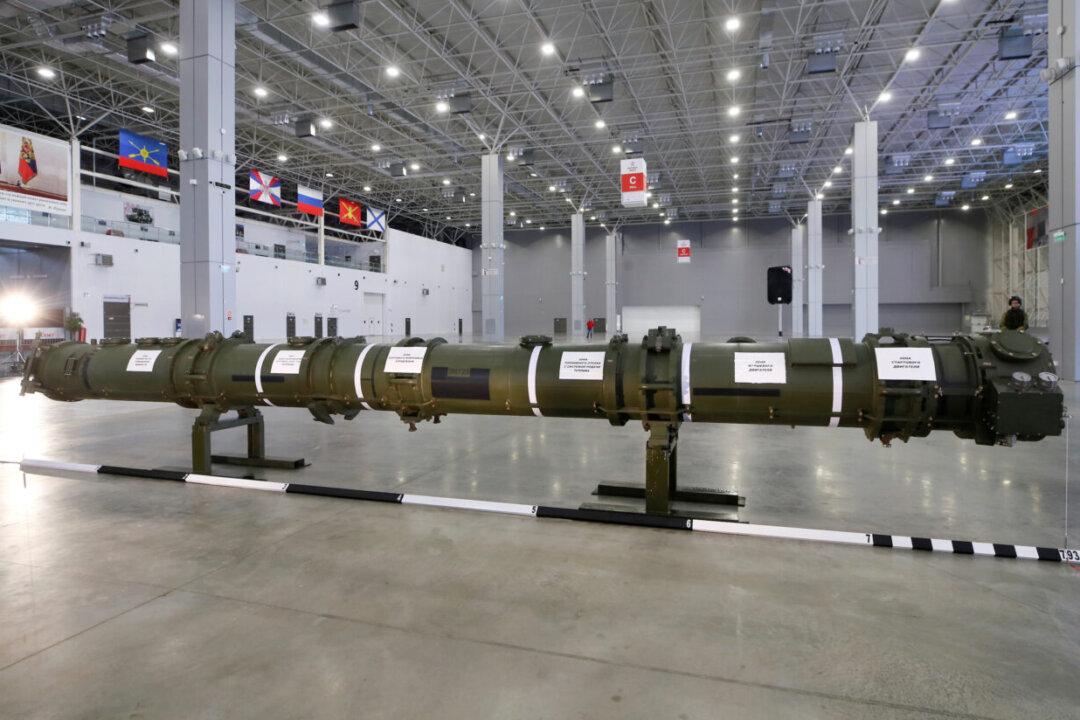Russian Defense Ministry officials took the wraps off the never-before-seen SSC-8 cruise missile on Jan. 23, in an attempt to challenge the U.S. claim that the weapon violates a nuclear weapons pact signed during the Cold War era.
Moscow displayed the missile two days after Robert Wood, the U.S. disarmament ambassador, called on Russia to destroy all of the SSC-8 missile systems and related components. Wood voiced the demand with roughly two weeks left before an early February deadline the U.S. set for Russia to come into compliance with the treaty.





